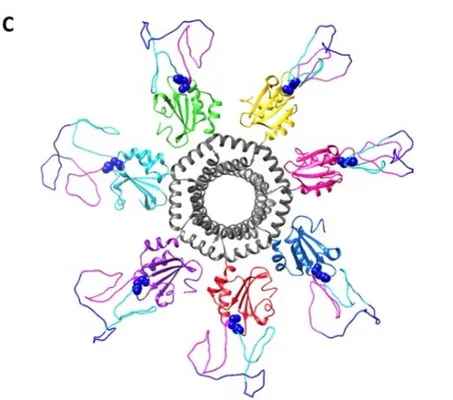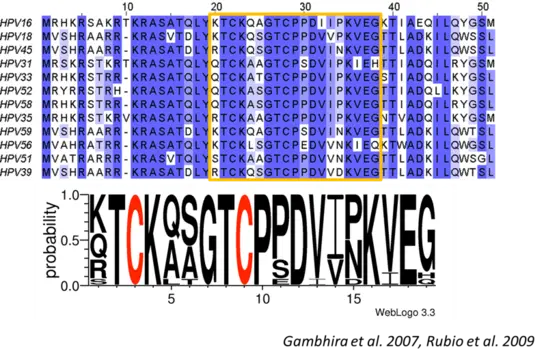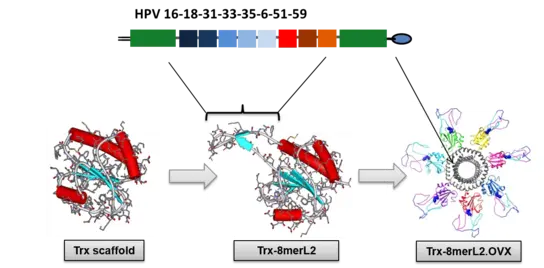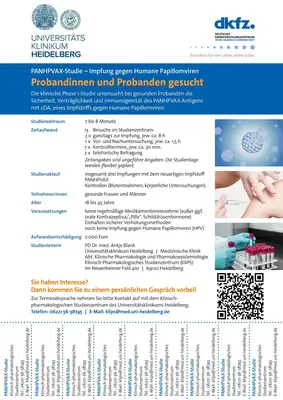PANHPVAX
PANHPVAX structure of vaccine antigen

Introduction
Infections with one of 15 human papillomavirus (HPV) types are considered the main risk factor for the development of certain anogenital cancers. In addition, these HPV types are also suspected to be causatively involved in oropharyngeal cancer. Three commercial vaccines are currently available, which are inducing prophylactic neutralizing antibody responses against the L1 major capsid protein. The vaccines are cocktails of L1 virus-like particles of two to nine different HPV types. L1 is not preserved between serotypes, therefore, the specific immune responses are limited to the HPV types represented by the vaccine. In contrast, the L2 minor capsid protein harbors a so called major cross-neutralization epitope in its amino terminus which has a high homology between serotypes. The PANHPVAX vaccine is based on this epitope.
The HPV L2: Archilles heel of HPV?

The L2 is the minor capsid protein of the papillomaviruses. It harbors a so called major cross-neutralization epitope in its amino terminus. For example, antibodies against this region of HPV16 will prevent infection with many other HPV types.
Vaccine design

A polytope, i.e. a string of L2 neutralization epitopes from eight different HPV is inserted into a scaffold of thioredoxin from the archeon Pyrococcus furiosus. A c-terminal addition of the OVX domain leads to heptamerization of the vaccine antigen and increases immunogenicity.
Phase I clinical trial has started recruiting

We aim to translate the vaccine into clinical use and conduct a first-in-human single-center dose-escalation trial in healthy volunteers with an intramuscular (i.m.) prime and two i.m. booster injections to demonstrate safety, tolerability, and immunogenicity of the PANHPVAX antigen. The vaccine will be administered in escalating doses and with increasing amount of the adjuvant cdA (novel excipient) in the formulation, in each dose cohort starting with a group of volunteers who will receive the vaccine without adjuvant. Individual participants will be treated three times with identical doses at months 1, 2, and 7 and followed up for safety and tolerability. Induction of neutralizing antibody responses will be determined by pseudovirion-based neutralization assay (PBNA), the current gold standard for monitoring HPV prophylactic vaccines.
